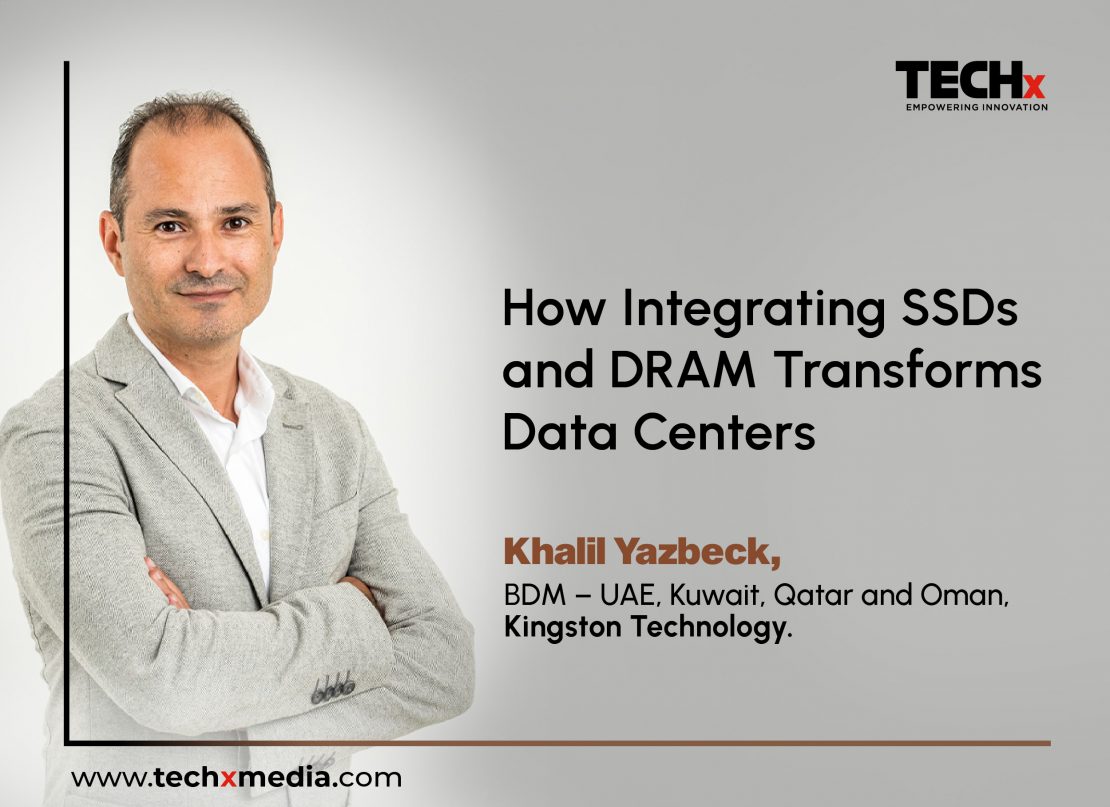
By Khalil Yazbeck, Business Development Manager – UAE, Kuwait, Qatar and Oman, Kingston Technology
In the era of technology advancements and digitalization, data centers play a key role in supporting various applications across industries, from simple cloud storage to intricate tasks involving artificial intelligence (AI) and big data analysis that handle massive amounts of data efficiently. To meet the increasing demands for data processing speed and capacity, it is vital to equip data centers, with state-of-the-art technologies. Two pivotal elements fueling this progress are Solid-State Drives (SSDs) and Dynamic Random Access Memory (DRAM). Incorporating these cutting- edge technologies into data centers can lead to enhancements in performance and give businesses a competitive advantage in today’s increasingly digital world.
The Importance of SSDs in Data Centers. A Closer Look at DC600M Series
SSDs are known for their speed and energy efficiency compared to traditional HDDs, and have significantly improved data center storage capabilities. The Kingston DC600M SSD is specifically designed to meet the demands of data centers, offering high performance and reliability for enterprise-level workloads.
The DC600M delivers consistent high performance with minimal latency, which is critical for industries reliant on real-time data processing, such as finance and healthcare. It also features power loss protection to ensure data integrity, making it a dependable choice for businesses that require uninterrupted operations.
By adding SSDs such as the DC600M to your data center setup, you can enhance performance while also cutting down on costs by lowering energy use and cooling needs efficiently. TheDC600M is designed with durability and power efficiency in mind, making it an ideal choice for businesses aiming to expand their operations without facing increased energy bills or maintenance expenses—especially if you opt for an SSD rather than an HDD, as SSDs offer greater energy efficiency.
The Benefits of DDR5 Server DRAM DDR5: The Backbone of High-Performance Computing
SSDs are responsible for storage functions while DDR5 Server DRAM steps in to facilitate real time processing with data access and enhanced bandwidth capabilities. DDR5 DRAM is becoming increasingly necessary as data centers progress due to its advancements compared to earlier memory versions.
DDR5 has twice the data transfer capacity compared to DDR4 memory modules; this enables servers to manage bigger datasets and cater to demanding tasks like AI calculations and intricate data analysis tasks effectively and efficiently in data centers.
Kingston’s DDR5 Server DRAM not only provides processing bandwidth and capacity, but also delivers improved energy efficiency—a key consideration for data centers looking to streamline operational expenses effectively. With reduced power consumption per bit, DDR5 helps enterprises balance performance with sustainability, a critical factor in today’s environmentally conscious business landscape.
For B2B enterprises, upgrading data center infrastructure with advanced SSDs such as the Kingston DC600M is no longer a luxury but a necessity. As data continues to expand and business processes become more intricate, the significance of top-notch performance, dependability and scalability has never been greater.
Investment in these technologies can provide businesses with a competitive advantage through quicker and improved data processing and analysis capabilities. In industries where data plays a role in day-to-day operations, like finance, healthcare and telecommunications, the ability to work swiftly and effectively could determine whether a company leads the market or falls behind.
With the increasing need for data storage and processing capabilities in today’s world, efforts to enhance space utilization and operational effectiveness are becoming increasingly important. The latest SSDs and DRAM have been engineered to offer performance in smaller sizes, which makes them perfect for optimizing the use of space in data centers. By offering storage capacity and quicker data retrieval speeds, these innovations enable businesses to boost their operational efficiency without the requirement of expanding their physical infrastructure.
In an evolving digital landscape, data centers must keep pace by enhancing their technology. Incorporating SSD drives and DRAM can greatly enhance efficiency, reduce delays and costs, and enhance reliability and scalability. These enhancements enable data centers to manage the increasing needs of data-intensive applications, empowering businesses with the necessary resources to remain competitive in today’s swiftly changing digital environment.